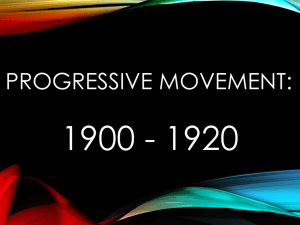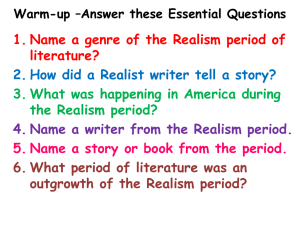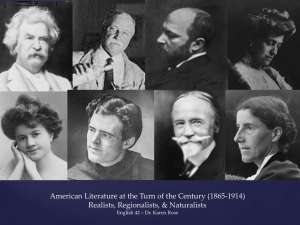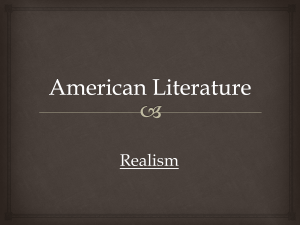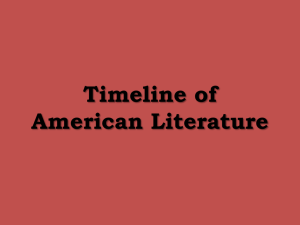POSC 2200 - Theoretical Approaches
advertisement
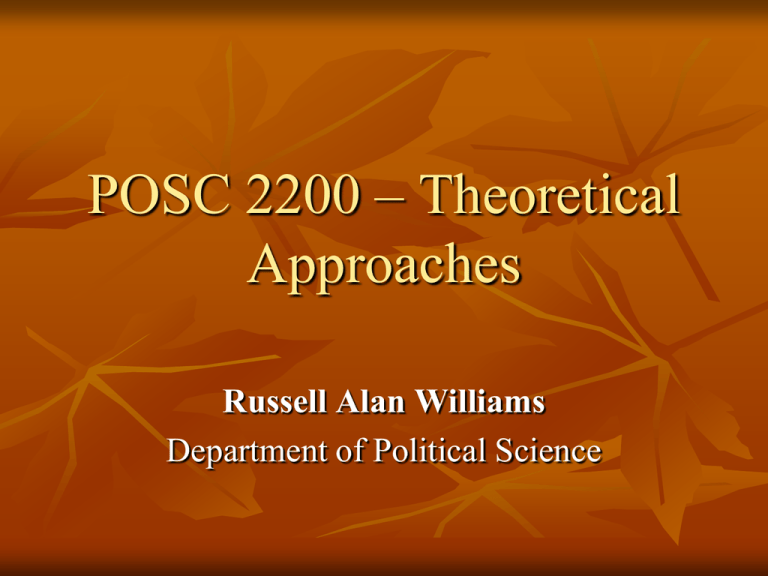
POSC 2200 – Theoretical Approaches Russell Alan Williams Department of Political Science Unit Two: Theoretical Approaches Required Reading: Globalization of World Politics, Chapters 5, 6 and 7. Realism: Mearsheimer, Anarchy and the Struggle for Power, (Excerpt available from the instructor.) Liberalism: Michael Doyle, “Liberalism and World Politics”, American Political Science Review, 80 (4), pp. 1151-69. (Excerpt available from the instructor). “Realism” Outline: 1. Introduction to Realism 2. Key Assumptions 3. The Evolution of Realism 4. 5. Classical Realism Neorealism Neoclassical realism Conclusions For Next Time 1) Introduction to Realism: IR “Realism” is a modern theory . . . . Founding debate – the interwar years (1919-1939) = Two “camps”: “Idealism”: Approach that emphasized international law, morality and organizations, rather than power E.g. Hope that League of Nations could prevent future wars “Realism”: Approach that explained IR mainly in terms of states’ pursuit of power E.g. States must seek to maximize power or face destruction = WWI was not “war to end all wars” E. H. Carr (1939) coined terms - Argued that WWII proved that “realism” was the correct theory Dominant theory until 1990s – particularly in US However . . . Realism has “historical antecedents”: Classical sources that warned against “idealism” – still cited to this day . . . . Collective insight? – See Mearsheimer for example: Thucydides (?) Machiavelli (?) Hobbes (?) World is dangerous and violent place “Wise” states pursue own power and security Morality and trust of allies can be foolish Three major types of “Realism”: 1. “Classical Realism” – based on danger posed by other humans 2. “Neorealism” – based on the structure of international system = “Structural realism” 3. “Neoclassical Realism” – Combines insights from Classical and Neorealism. 2) Key Assumptions of Realism a) Humans are potentially “bad” . . . Inherently selfish and power seeking E.g. Debate between “Classical Realism” and “Idealism” about human nature Thomas Hobbes (1642) Only Leviathan, or strong sovereign government, keeps us from killing one another =There is no “Leviathan” in international politics under normal circumstances . . . . “Anarchy”: A political system that has no central authority – does not equal chaos, but does not have enforceable rules separate from power . . . . 2) Key Assumptions of Realism b) “Statism”: Realism emphasizes the role of states as the legitimate, rational, and constitutive actors of international politics. Key concerns of the state: “Survival” . . . . Classical realist scholars argue that leaders’ first and only priority is to ensure the durability of the state (E.g. Machiavelli) “Self Help”: Under “anarchy” states can only trust in their own abilities to ensure survival 2) Key Assumptions of Realism c) “Power”: the ability to get others to do what you want them to do . . . . For realists power comes before politics and influence and can be understood in material terms = Military, economic and strategic “capabilities” Modern realists emphasize the “Balance of Power” above all else 3) The Evolution of Realism: a) “Classical Realism”: Carr and others drew on inspiration from classical sources . . . States should be protective of the “national interest” Leaders should prioritize “raison d’etat/reasons of state” E.g. Machiavelli's Prince must be ready to do what is necessary, not what is “good”. Deep suspicion of trust in rules and other sovereign authorities . . . as they also (if they are wise) will pursue “raison d’etat” in their strategies. 3) The Evolution of Realism: a) Classical Realism was largely replaced by “Neorealism” after the 1970s Desire for more science and clearer variables - arguments about threats inherent in human nature and rogue states give way to a more “structural” theory (Kenneth Waltz) “Neorealism”: Used ideas from behavioral science to understand state behavior, given the structure of the international system. Two variables: 1) “Anarchy” 2) Distribution of power (military and economic abilities) Note: Internal characteristics of states (Democracy versus nondemocracies etc.) are NOT important, as all states seek the survival under “anarchy” 3) The Evolution of Realism: “Neorealism” directed focus to: “Relative Gains”: International politics is a “zero-sum game”, in which states must be concerned about how much other states gain in relation to them = one state’s gain necessarily means another state has lost . . . . “Security Dilemma”: As states acquire capabilities to make themselves secure, they make others more insecure – leads to a cycle of arms races and growing insecurity. Implications? >> Possibility of cooperation is very limited, because of rational self interest and fear of "Relative Gains" Neorealism: Relative Gains, “Prisoners’ Dilemma” and Nuclear Proliferation India vs. Pakistan - Both would be better off by not developing “nukes” = cooperation However, each state most fears cooperating (not developing nukes) while other “defects” and does!!! = huge relative gains problem!!! Pakistan Cooperate (No Nukes) Cooperate Defect (No nukes) (Get Nukes) C,C C,D D,C D,D India Defect (Get Nukes) •India preference = DC>CC>DD>CD •Pakistan preference = CD>CC>DD>DC •If both states are rational, fear of cheating and “relative gains” leads to equilibrium at (D,D) Key Point: Rational self interest makes cooperation difficult 3) The Evolution of Realism: “Neorealism” also led to debate between “offensive realism” and “defensive realism”. Both see states as necessarily focused on maximizing their security, but have different theories about the impact of capabilities . . . . Offensive vs. Defensive Realism John Mearsheimer – “Offensive Realism” Assumptions: All states possess some military capability All states concerned about survival All states uncertain of other’s intentions Friends today can be enemies tomorrow . . . . Result: Great powers should think and act aggressively whenever they can Maximize power & exploit other’s weakness E.g. Athens and Melos = Culture of fear! Offensive vs. Defensive Realism Robert Jervis – “Defensive Realism” Assumption: If military capabilities favor defense then the capabilities of others are less threatening E.g. Weaker states can defend themselves against stronger if there is an attack Result: States do not need to be so quick to maximize power to survive E.g. post World War I France Problems? 3) The Evolution of Realism: “Neoclassical realism”: Combines the structural ideas of “neorealism” with more classical ideas bout the nature of individual states. “Neorealism”: Suggested states were the same, and all were threatening “Neoclassical realism”: Suggests some states are less threatening regardless of their “capabilities” as they are satisfied with the status quo. 3) The Evolution of Realism: Key point: Realism needed to move beyond just thinking about military capabilities and think about the goals of individual societies and states. “Revisionist” states are the ones that should be feared . . . . 4) Conclusions - Realism View of individual: Power seeking, selfish and antagonistic View of state: Unitary, rational and power seeking View of international system: Anarchic, conflict constant (only inhibited by “balance of power” – E.g. conflict less likely under “Hegemony” or “unipolarity” “Neorealism” has tended to play down individual and domestic politics explanations of state behavior 4) Conclusions - Realism: Strengths: Clearly stated & small number of variables = clear predictions Reflects much of what we observe (?) Problems: Most realists are “offensive” - should equal more war? There seem to be many rules and morals in international politics Hard to explain some behavior from realist perspective: Decolonization? USSR "gave up" the cold war? Unclear role for economics – Realism has hard time explaining economic cooperation and “globalization” = GREAT DEAL OF COOPERATION 7) For Next Time . . . Unit Two: Theoretical Approaches “Liberalism: Idealism – Institutionalism” Required Reading: Globalization of World Politics, Chapters 5, 6 and 7. Liberalism: Michael Doyle, “Liberalism and World Politics”, American Political Science Review, 80 (4), pp. 1151-69. (Excerpt available from the instructor).



